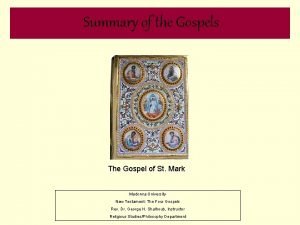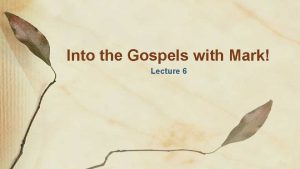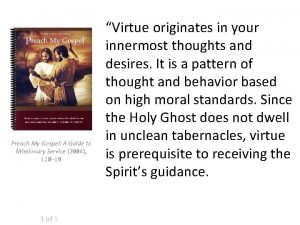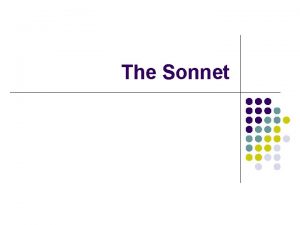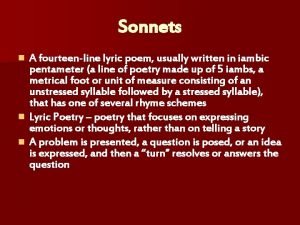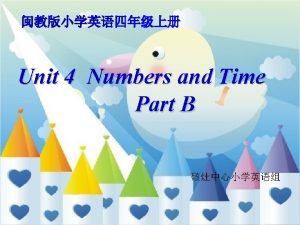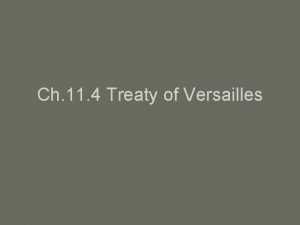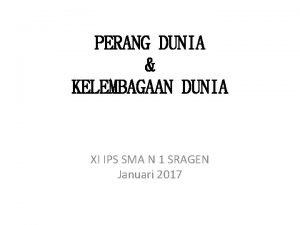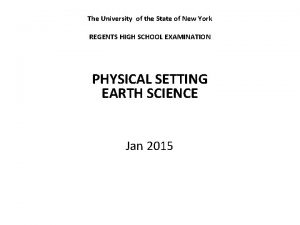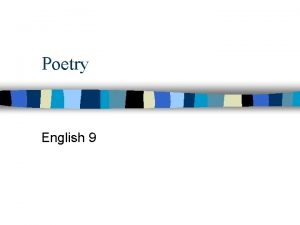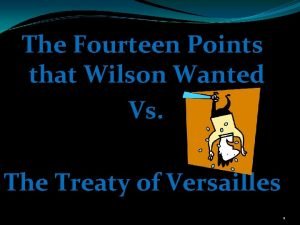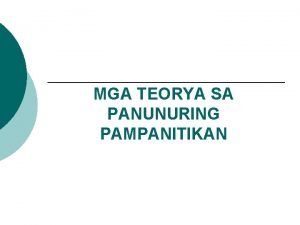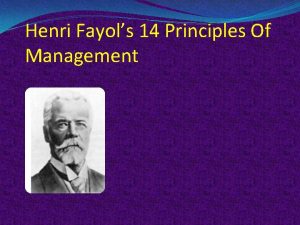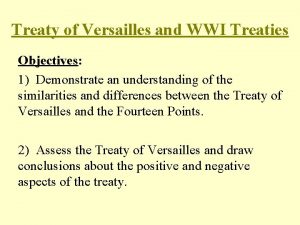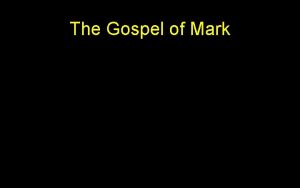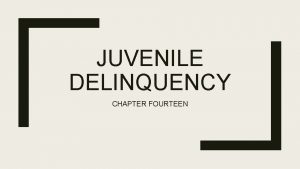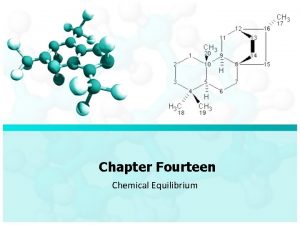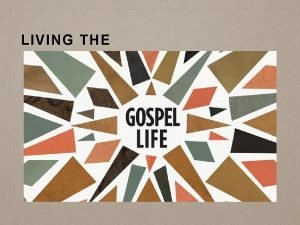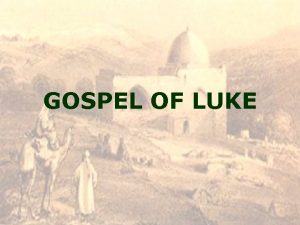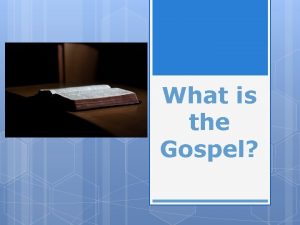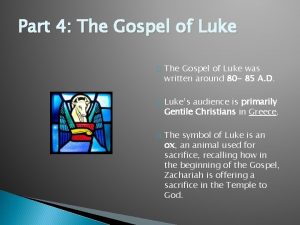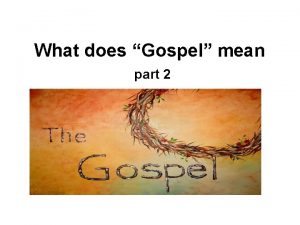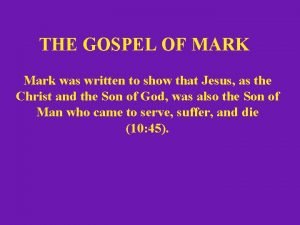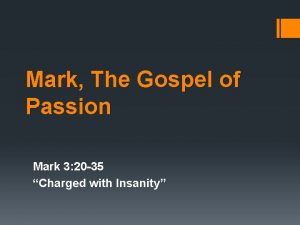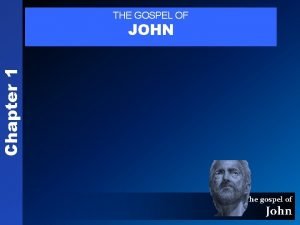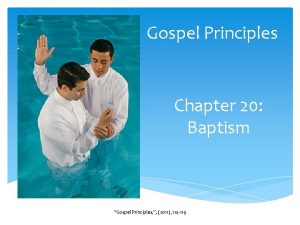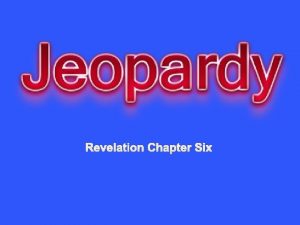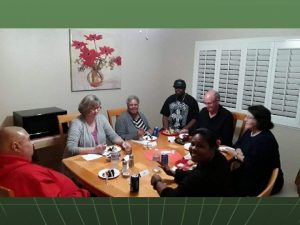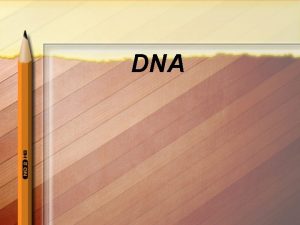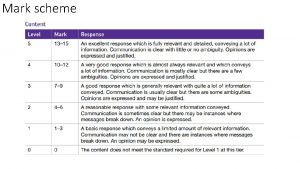THE GOSPEL OF MARK Chapter Fourteen Part 1
























- Slides: 24

THE GOSPEL OF MARK Chapter Fourteen Part 1

Opening Prayer O God, who raised up Saint Mark, your Evangelist, and endowed him with the grace to preach the Gospel, grant, we pray, that we may so profit from his teaching as to follow faithfully in the footsteps of Christ. Who lives and reigns with you in the unity of the Holy Spirit, one God, for ever and ever.

Source Material ■ New American Bible Revised Edition (NABRE) ■ Catechism of the Catholic Church (CCC) ■ Catholic Christianity, Peter J. Kreeft ■ The Gospel of Mark, Mary Healy ■ The Synoptic Gospels, Keith F. Nickle

Summary of Previous Chapters ■ Much of the Gospel up to this point has prepared us for what will happen in chapters 14 -15 – Jesus’ own predictions of his passion (8: 31; 9: 31; 10: 33) – The increasing tensions with the religious leaders, culminating with the cleansing of the Temple and the parable of the tenants, and the conspiracy to put Jesus to death – The apocalyptic narratives of chapter 13 reveals that what is about to happen to Jesus will mark a definitive change from one era to the next – an era of fruitfulness and right worship of the Father through Christ, and the beginning of the final stage of salvation history with the age of the Church (the new tenants) ■ We will see many details of the Passion shared amongst the four Gospels, which tells us of the importance the early Church placed on these details ■ We will also see several references to OT prophecy – whether by direct quotes or indirect allusions – focused on the suffering Messiah

Excursus: The Passover and the Feast of Unleavened Bread ■ The Passover is the great annual commemoration of the single most important event in the OT – the deliverance of the people Israel from slavery in Egypt ■ On the day of the Passover (that is, during daylight on the day the Passover began, which would be at sundown), each family was to procure a lamb, which would be slaughtered at the Temple that afternoon. After sunset, the lamb would be eaten in a ritual meal (seder) according to the prescriptions of Exodus and tradition. ■ The Feast of Unleavened Bread was eight days long and began with the Passover. (This is similar to our own ‘octave’ celebrations of various feasts, like Easter). This feast recalled the haste with which the people left Egypt – so fast that there was no time to let the bread rise. They were to eat only unleavened bread during these eight days in commemoration of that flight.

The Conspiracy against Jesus (14: 1 -2) ■ “two days’ time” – Keep in mind that it’s only the third day since Jesus entered Jerusalem. He arrived on Sunday (Palm Sunday), so the events of chapters 11 -13 occurred during this brief period – So the beginning of chapter 14 is between Tuesday evening and Wednesday evening of Holy Week. ■ The chief priests and scribes – These were the people who would seek to put Jesus to death, as he himself prophesied (8: 31; 10: 33). These religious leaders have been plotting to get rid of Jesus for some time (3: 6; 11: 18; 12: 12) – They wish to put their plan into action by means of “treachery, ” in order to avoid the large crowd of supporters and followers of Jesus. This was all the more important since it was Passover week, when the normal population of Jerusalem tripled in size due to all the pilgrims.

The Anointing at Bethany (14: 3 -9) ■ Notice the placement of this account – right before the Passion. Mark is telling us that this was a significant action on the part of this woman. ■ Notice here another “sandwich” technique by Mark, in which he places one account between two other similar accounts, so that the reader will compare and contrast them. – Here, the anointing – a touching and beautiful gesture of love and devotion towards Jesus is ‘sandwiched’ between two accounts of evil and treachery – by the chief priests and scribes, which we just heard, and next by Judas. – Ironically (and sadly), those who should be most devoted to Jesus – the religious leaders of his own people and one of his own disciples – are the ones who will betray him, while this anonymous woman is the one who shows true faith and discipleship.

The Anointing at Bethany (14: 3 -9) ■ Mark does not tell us the identity of the woman, though John reveals that it is Mary, the sister of Lazarus and Martha. This makes sense, as the setting for the anointing was the village of Bethany, where the siblings lived. (Jn 11) It’s a couple miles or so from the city. ■ “Alabaster jar of perfumed oil” – Nard, or spikenard, was (and is) an aromatic oil native to India. It’s value of 300 days’ wages indicates that it is a treasure of enormous value, nearly a year’s pay – Think of the love and devotion of this woman in making this type of sacrifice. She was apparently completely unconcerned with mere earthly treasure when it came to Jesus. She gave him her best, likely her most valued possession. – This episode is reminiscent of the poor widow at the Temple treasury (12: 41 -44) who contributed a few pennies, but it was all she had, a similarly grand gesture of devotion to God. – In both instances, Jesus praises not the amount sacrificed, but the faith which it was given.

The Anointing at Bethany (14: 3 -9) ■ The act of anointing is a hugely significant and highly symbolic gesture – In OT times, anointing was performed to crown a king (1 Sm 10: 1; 16: 13), or consecrate a prophet (1 Kgs 19: 16) or to ordain a priest (Ex 29: 7) – Mark is telling us through this woman’s actions (and connected as they are to the passion) that Jesus is the Prophetic Messianic King and definitive High Priest – Note that at this moment Jesus literally becomes the Christ, that is, the “anointed one. ” – Also note that at our baptism, we are similarly anointed to share in Christ’s own offices as priest, prophet and king ■ “Indignant, infuriated” – It appears those at table with Jesus were not impressed by this gesture and completely missed its symbolic character. They still did not fully understand Jesus’ identity or his mission. But somehow this woman did.

The Anointing at Bethany (14: 3 -9) ■ ”She has done a good thing” – The woman recognized that devotion to Jesus comes before anything else and that Jesus was worthy of all we have and are. ■ “The poor you will always have with you – you will not always have me” – This does not mean that the poor should be ignored but rather is a reminder of our consistent duty to come to their aid. – Jesus is the source of all devotion and the reason for all our acts of charity. (Without Jesus, we are an NGO) Don’t look at this as an “either-or” question – rather, it’s “both-and” but Jesus comes first! It is through Christ that our acts of charity become fruitful. – The woman’s acknowledgement of that through the anointing is therefore a good thing. – As before, like the poor widow, the woman made an extravagant gesture towards Jesus. This in in contrast to others who were balanced and measured in their response. – Ironically, what is coming next is the betrayal of Judas, who instead of spending money on Jesus with devotion, took money in order to betray him.

The Anointing at Bethany (14: 3 -9) ■ Anticipation of his burial – Typically bodies would be anointed with perfumed oil before burial – As Jesus would die as a criminal, and as there would be no time for anointing (because the Sabbath was about to begin), Jesus is providentially anointed beforehand. – As we will see, the women go to the tomb on the morning of the resurrection (as soon as the Sabbath was over) in order to anoint him – but he wasn’t there! This woman was the only one to do it. ■ “Proclaimed to the whole world” – Here Jesus prophesies the mission of the Church – to carry the saving Gospel of Christ to the nations. He’s once again hinting that his impending death would end in triumph. (Yet no one seems to understand this) – The woman’s action of anointing him would be remembered and told by all succeeding generations (as we have just done) as a reminder of her extravagant generosity towards Jesus and as a model for the faithful of the future.

The Anointing at Bethany (14: 3 -9) ■ Note the similarities with the Last Supper, which is coming next: – Another meal, Jesus is again reclining at table. – Another ritual action in symbolic anticipation of his coming death: the woman breaks the jar to anoint Jesus before his death. At the Last Supper, Jesus will break the bread as a sign of his body that will be ”broken” on the cross. – She pours out her greatest treasure upon him. Jesus will pour out his life upon us, saying “this is my blood of the covenant, which will be poured out for you. ”

The Betrayal of Judas (14: 10 -11) ■ Here we have the other end of the ‘sandwich, ’ with the treachery of the religious leaders first, then the devotion of the woman who anointed Jesus coming next. ■ Note that Judas takes the initiative. He had certainly seen the many confrontations between Jesus and the chief priests and knew that they wanted him dead. – Judas could give them exactly what they needed – to know where Jesus would be so they could come and arrest him quietly and away from the crowds ■ Mark identifies Judas here (and again in the verses to come) as “one of the twelve, ” making sure we understand how traitorous the betrayal was since Judas was one of Jesus’ intimate core group of followers

The Betrayal of Judas (14: 10 -11) ■ When we think of all that Judas has seen Jesus do – the miracles, the great crowds, etc. , his betrayal is staggering ■ Mark does not mention in his Gospel exactly what Judas’ motivation was in betraying Jesus. – In Mark, Judas does not ask for money but is offered it. – Perhaps after the anointing at Bethany, he finally realized that Jesus really was going to die and not become the type of Messiah that Judas (or all of Israel) was expecting. – But ultimately his motivation is a mystery. ■ As we will see, Jesus knows exactly what is going to happen and even appears to give Judas a last chance to change his mind abort his plan

Preparations for the Passover (14: 12 -16) ■ There is great significance in the fact that Jesus chose the Passover as the day when he would be handed over ■ As we mentioned, the Passover is the great feast remembering and celebrating God’s actions in saving his people Israel. The sacrifice of the Pascal lamb, the blood on the doorposts, the unleavened bread and bitter herbs, the liberation from slavery and the beginning of the journey to the Promised Land are all important elements in Jesus’ passion – He himself is now the lamb that will be sacrificed. His own blood will save his people. He is the bread that will be broken, and he will suffer the bitterness of his passion. He will liberate his people (and all people) from slavery to sin and open up the definitive Promised Land of eternal life in heaven. ■ His knowledge of what the disciples will find, the man they will meet carrying a jug, the upper room, etc. all demonstrate that Jesus is in complete control over his destiny and that he is submitting himself to what is about to happen in order to fulfill his Father’s will.

The Betrayer (14: 17 -21) ■ We’re now at the Last Supper, and during this most intimate meal with his disciples, Jesus reveals that one of them will betray him. This must have been like a bomb going off in their midst – there was no hint that a betrayal was at hand – Reminiscent of Ps 41: 10 – “Even my trusted friend, who ate my bread, has raised his heel against me…” ■ “Dips with the dish” – A typical activity, still done, in Middle Eastern culture, in which there is a central dish of herbs and oil for dipping bread. – In Mark, Jesus does not reveal the betrayer by name, and it could be that many of them used the same dish. What he is effectively saying is that someone right there at that table – one of them, one of the Twelve chosen and most intimate companions – would be the betrayer – John 13: 26 is more direct in identifying Judas as the betrayer

The Betrayer (14: 17 -21) ■ “Surely it is not I? ” – A very profound reaction. The other eleven weren’t planning on betraying them, but perhaps Jesus’ words gave them all pause to stop and search their hearts, realizing the evil that they were capable of without God’s grace. (A great lesson for us all!) ■ A final chance… – Jesus of course knew it was Judas and with these words gives him a last chance to change course. Judas had already laid the groundwork for his betrayal but had not yet actually done it – Jesus reveals the horrible consequences to his betrayer, and we have a sense of tragic sadness that one of his sheep will be irrevocably lost – It’s important to note that even though Jesus knows of Judas’ betrayal, and Scripture had prophesied it, it does not relieve Judas of his freedom and his guilt. Just because God knows something in advance does not take away our free consent.

The Last Supper (14: 22 -25) ■ This is a very brief account of the institution of the holy Eucharist and the celebration of the first Mass. It is understood here that this was the moment of the disciples’ ordination as the first priests of the new covenant. ■ Taken, blessed, broken and given – Very similar language to the two miracles of the loaves (6: 41; 8: 6) and very similar to the action at Mass in which the priest takes bread, says the blessing, breaks it and gives it to the people to be eaten. ■ ”Take it. This is my body. ” – These words are a type of prophecy in which Jesus anticipates his passion of the following day when his body will be “broken” like the bread – It is also the moment of an extraordinary and profound gift. By telling them to take it (and eat it), Jesus is giving them the gift of himself, to be received within their very beings.

The Last Supper (14: 22 -25) – This action would be repeated in perpetuity every time the disciples (and future disciples) gathered in worship. Though Jesus would not longer walk among them, he was still sacramentally present to them, in reality and truth, through the “breaking of the bread, ” and giving them the gift of himself. – This action would also recall and make present the sacrifice of Jesus upon the cross – at the first Mass it was an anticipation of that event. At all subsequent Masses, it would be a remembrance and re-presentation of it. – Mark’s audience would have been very familiar with these actions, as the celebration of Mass was well established among them. – It is exactly the same thing we do when we gather for Mass.

The Last Supper (14: 22 -25) ■ ”This is my blood of the covenant” – Most all covenants in the OT were sealed and ratified in blood, as a covenant formed a bond between the two parties, and the closest bond was that of blood (family). – Typically, it would be the blood of a sacrificed animal. That it was the blood of Jesus the incarnate Son of God represented a definitive and ever-enduring covenant of infinite value. ■ “Take and drink” – To drink the blood of a covenant was a completely new concept – Blood was never consumed, not in a sacrifice and not even in normal meals. – Blood was understood as sacred and the foundation of life and was always poured out on the ground (Dt 12: 16) – Thus the blood of an animal was used in sacrifices as it was the most sacred thing to offer to God.

The Last Supper (14: 22 -25) – When it was the blood of the Son of God, who was himself becoming the sacrifice, we understand that his sacrifice was of infinite worth – And to drink that blood was to be united to God’s life in an unheard of and most unexpected way. The graciousness of God to offer to share his life, through consuming his blood (and body) was and is a gift of incalculable value. – Think about this next time you approach the altar to receive him!! ■ “Will not drink it again…” – Here is a hint of the glory to come after his resurrection – The eucharistic banquet we share at Mass is thus not only a remembrance and making present of the Passion of Christ, but also a foretaste of the eternal banquet of heaven when our union with God and the sharing of his life will be complete.

The Last Supper (14: 22 -25) ■ The Mount of Olives – This is the location of the Upper Room (cenacle) where the Last Supper was shared and also of the Garden of Gethsemane. – The mount overlooks the Kidron Valley, which rises up to the Temple Mount on the other side. It still offers the best view of the old city of Jerusalem – From the Garden to the High Priest’s residence, the site of Jesus’ trial and Peter’s denial, it’s about a mile down the valley and up the other side. The ruins of the granite stairway leading up to the High Priest’s residence are still there.

The Last Supper (14: 22 -25) ■ Reflection – Mark’s narrative of the institution of the holy Eucharist and the priesthood is short compared to the other Gospels, but it reveals the reality that Christ’s passion was an atoning sacrifice, offered for the forgiveness of sin. – Jesus himself is the sacrifice offered and the high priest who offers it – Our weekly (even daily) participation at Mass in not only a remembrance of that sacrifice but a means of perpetuating its effects to all people at all times, and of giving continual thanks (eucharisteo) to God for what he has done to save us. – It also represents our highest worship of God, as that action is the re-presentation of Christ’s one, single sacrifice, made present upon the altar. Nothing else comes close to the sacrifice of the Mass.

Next Week… ■ Conclusion of chapter 14 – The Agony in the Garden – The Betrayal of Judas – The Arrest and Trial of Jesus before the Sanhedrin – Peter’s Denial ■ Glory be to the Father, and to the +Son, and to the Holy Spirit, as it was in the beginning, is now, and ever shall be, world without end. Amen.
 Mark gospel summary
Mark gospel summary Outline of mark
Outline of mark Preach my gospel chapter 3
Preach my gospel chapter 3 Rhyme scheme of not in a silver casket
Rhyme scheme of not in a silver casket It is a 14-line lyric poem with iambic pentameter.
It is a 14-line lyric poem with iambic pentameter. One two three four five six to hundred
One two three four five six to hundred Wilsons fourteen points and the treaty of versailles
Wilsons fourteen points and the treaty of versailles Kelembagaan dunia
Kelembagaan dunia What is a setset
What is a setset The diagram below represents the placoderm fish
The diagram below represents the placoderm fish What is poetry in literature
What is poetry in literature Siya ang may akda ng fourteen points
Siya ang may akda ng fourteen points Poem self pity
Poem self pity A 14 line lyric poem
A 14 line lyric poem Siya ang may akda ng fourteen points
Siya ang may akda ng fourteen points A lyric poem of 14 lines
A lyric poem of 14 lines Ano ang humanismo
Ano ang humanismo Fourteen one act play summary
Fourteen one act play summary Henri fayol 14 principles of management introduction
Henri fayol 14 principles of management introduction Fourteen points and treaty of versailles similarities
Fourteen points and treaty of versailles similarities Quality is free
Quality is free Space bar
Space bar Hình ảnh bộ gõ cơ thể búng tay
Hình ảnh bộ gõ cơ thể búng tay Frameset trong html5
Frameset trong html5 Bổ thể
Bổ thể
